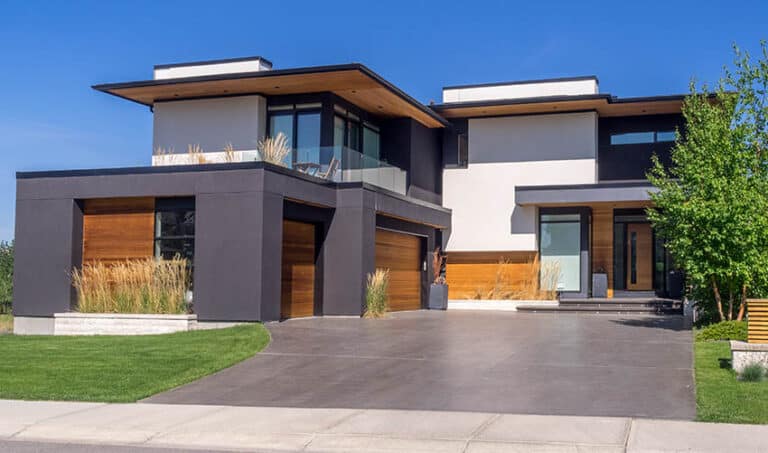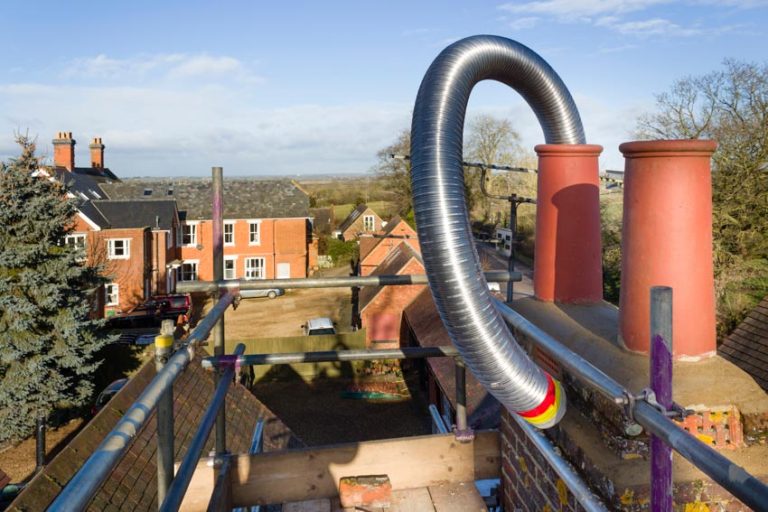Laminate Flooring Vs Linoleum: Which One To Use?
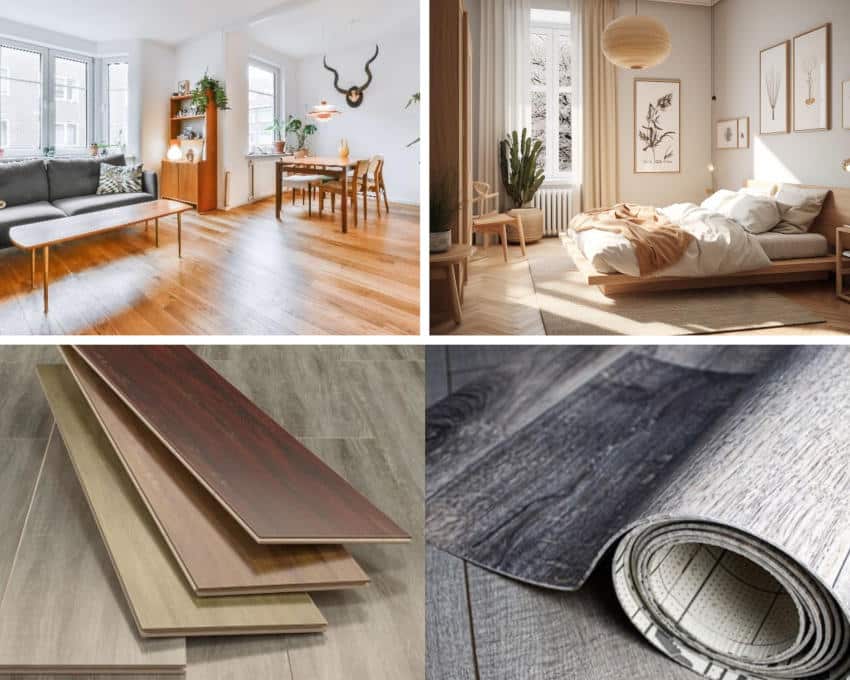
One of the snags homeowners encounter when updating their home flooring is choosing between linoleum and laminate floors. Sure, there seem to be major distinctions, but it all gets confusing when other terms, such as vinyl, LVT, and laminate tiles, are thrown into the mix. Understandably, you are not alone.
Read below for a guide that’s easy to understand and will help you differentiate between and compare laminate flooring vs linoleum. This includes what their pricing ranges are, what pros and cons they come along with, how to tell the difference between them, and most importantly, which is the better flooring option to consider.
Quicklist: The Differences of Laminate Flooring from Linoleum
| Feature | Laminate | Linoleum |
|---|---|---|
| Durability | More durable | Less durable than laminate |
| Water Resistance | Waterproof | Not typically waterproof |
| Appearance | Can look like actual wood | Various designs, but not wood-like |
| Eco-friendliness | Less eco-friendly | Eco-friendly |
| Installation | Relatively easy to install | More difficult to install |
| Price Point | Generally more affordable | Higher price point for premium designs |
What’s The Difference Between Laminate And Linoleum
To understand the difference between laminate and linoleum, we first need to understand each of them and their main characteristics.
Linoleum
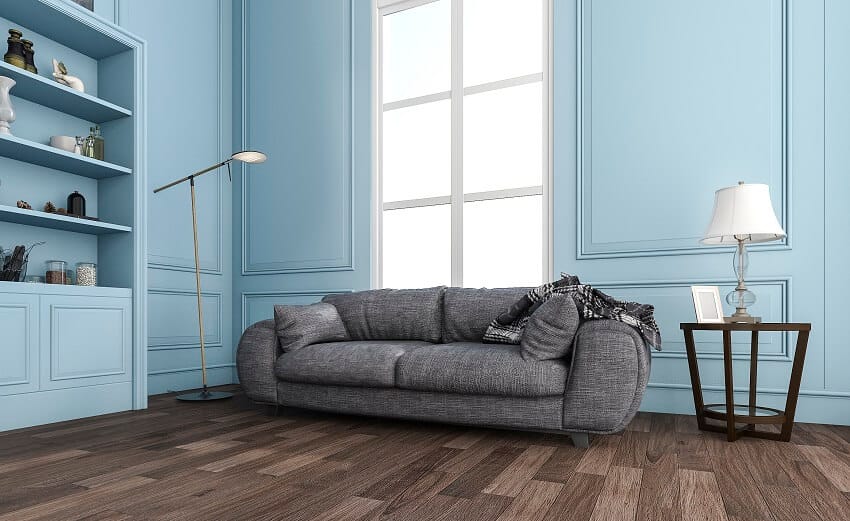
Linoleum is a composite flooring material that is naturally derived such as wood flour, cork dust, pine resin, and solidified linseed oil, among other various substances. This material peaked in popularity in the 1900s and was one of the top and most commonly seen floor options until the 1940s. After that era, it has since stepped aside for something similar but ultimately more affordable and easier to manufacture: vinyl.
Laminate
Laminate is another type of composite flooring that’s pretty similar to hardwood. It has been said that synthetic veneer is the perfect marriage between the best-engineered wood floors you can buy and traditional linoleum. Laminate flooring materials typically comprise three layers: an underlayment made of fiberboard or plywood base, an aesthetic image layer, and a hard and smooth plasticate layer that’s typically scratchproof.
The durability of laminate floors comes from a tough layer made of resin, which makes the laminate resistant to scratches, moisture, and fading. [Source: North American Laminate Flooring Association]
Laminates are often the best hardwood floor substitutes because they mimic the look and feel of actual hardwood floors more realistically, even way better than LVT ever could.
This material was invented back in the 70s, and it’s still being mass-manufactured to this day. Understandably, laminates can sometimes get a bad rap because of their plastic composition. However, over the years and with technological innovation, it has become more and more difficult to distinguish from real hardwood in the past few years.
If you want to create a floor design that’s as gorgeous as actual hardwood floors, laminate is an attractive and affordable option. As far as fake wood floors are concerned, laminates are the best options to check out. You can find different styles like real stone, concrete, and brick.
“Laminate in a slate style is far easier to install and costs much less than the real thing.” – Roy Barnhart, Joseph Provey, Design Ideas for Flooring
Linoleum Flooring Vs Laminate Price
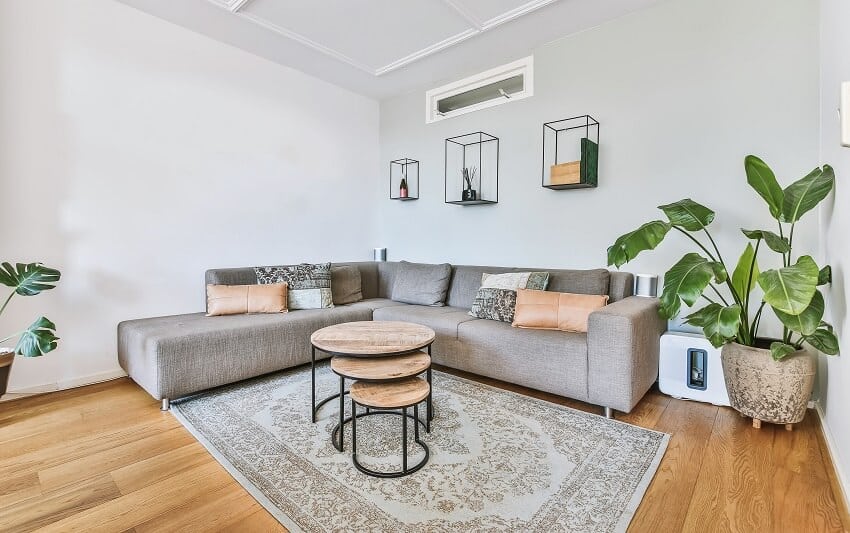
Both linoleum and laminate flooring are affordable options, so you definitely won’t go wrong with any of them if you would like to opt for a quick upgrade on a budget. Interestingly, they both almost cost the same.
The average cost for both flooring per square meter is $2. However, if you would like to explore styles that are more luxurious or that go beyond the usual or typical designs, that’s when the price variances can start to kick in.
Premium laminates estimated cost is around $5.25 per square meter and upwards, whereas linoleum can cost around $7 or upwards on the premium end.
Which Is Better Linoleum Or Laminate Floors
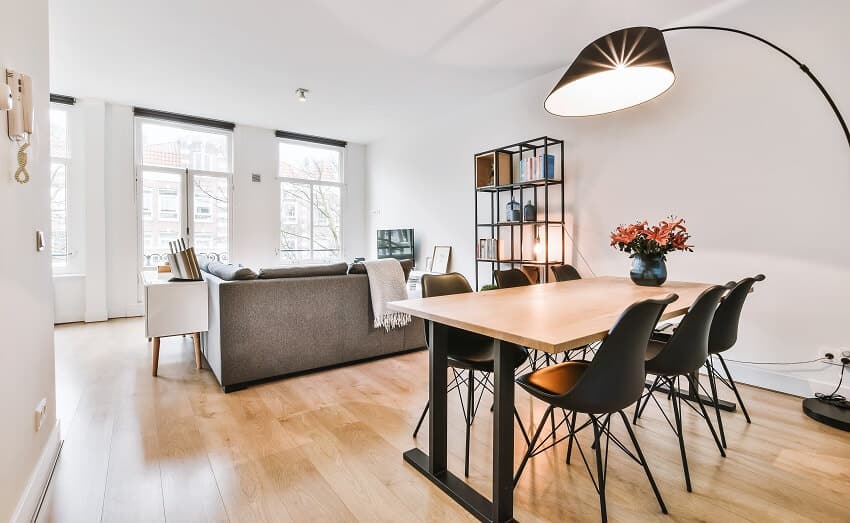
To better understand which is better, it would be best to compare their pros and cons.
Linoleum Pros and Cons
Pros:
• It’s eco-friendly and biodegradable.
• It comes in various designs, textures, colors, and sizes and can mimic real-world materials well while standing well with great subfloors.
• It feels softer on the feet than laminate floors because of its natural composition.
• It is also more affordable because it’s been around for a long time, and its manufacturing is easily accessible.
Cons:
• It isn’t completely waterproof because of its organic composition.
• It may be difficult to acquire a wide range of designs in linoleum as the material has been largely replaced by vinyl over the years.
• It is a little more difficult to install than laminate, as the latter can stand independently. In contrast, linoleum needs a joist and needs to be glued to a subfloor layer to work best. It needs to be installed on a very smooth subfloor, or else it’ll be prone to warping and getting dislodged.
Laminate Pros and Cons

Pros:
• Laminate floors can withstand wear and tear. They’re scratch-resistant, so they can stand up extremely well if you have little kids and pets around the house.
• Laminates are experts when it comes to hardwood floor imitation. A lot of hardwood floor manufacturers also manufacture composite flooring.
• Laminates are inexpensive, so if you’re planning a flooring upgrade, you can get it done even if you are on a budget.
• Resin-coated floors can be embossed or textured to appear and feel like real wood because it’s typically thicker than linoleum or vinyl.
Cons:
• They aren’t as budget-friendly as their linoleum counterparts.
• Engineer plank flooring can be vulnerable to water damage once the top layer has shown some wear and tear.
• It can’t be refinished. This means that even if it copies the look and feel of real wood, it can’t hold up against actual wood.
• Composite flooring is brittle and not easy on the feet when walking on them. You can throw in an area rug or some carpets for added softness, but it can be a bit of a hassle. Learn more about laminate flooring pros and cons here.
Vinyl Vs Linoleum How To Tell The Difference
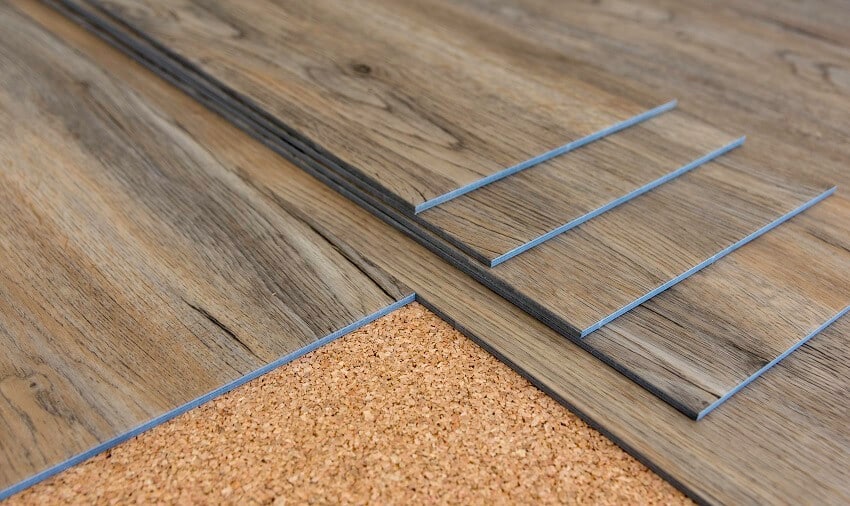
So what’s the difference between linoleum and vinyl? Similar to marmoleum, vinyl is also made out of composite material, but it’s just that they aren’t naturally derived because vinyl’s main component is PVC or plastic. Vinyl gained popularity from the 1950s and onwards. To this day, vinyl remains one of the most popular and lucrative business sectors in the flooring industry.
The common confusion is that nowadays, linoleum is interchangeably used with vinyl. The two get tossed around together, but ultimately, vinyl has technically replaced it in most, if not all, home applications.
The reality, however, is that they are 2 different flooring options. Marmoleum is biodegradable, whereas vinyl isn’t. Linseed floor treatment has taken a bit of a backseat, but it’s slowly returning, especially with the current preference for eco-friendly home upgrades and construction options.
Then comes LVT, or luxury vinyl tile. This is considered one of the best types of vinyl flooring and usually goes with other names such as LVP (luxury vinyl plank), WPC (wood plastic composite), or just luxury vinyl.
Every manufacturer may call it something different, depending on how they would like to spin it from a marketing and branding standpoint.
LVT is a material made out of rigid vinyl planks often designed to mimic other types of flooring, such as wood and the like. They’re always marketed and sold as click-together puzzle pieces, making them incredibly easy to install and put together.
On top of that, their plastic composition makes them naturally rot-resistant and incredibly durable. You may also check laminate vs vinyl flooring here.
The Conclusion
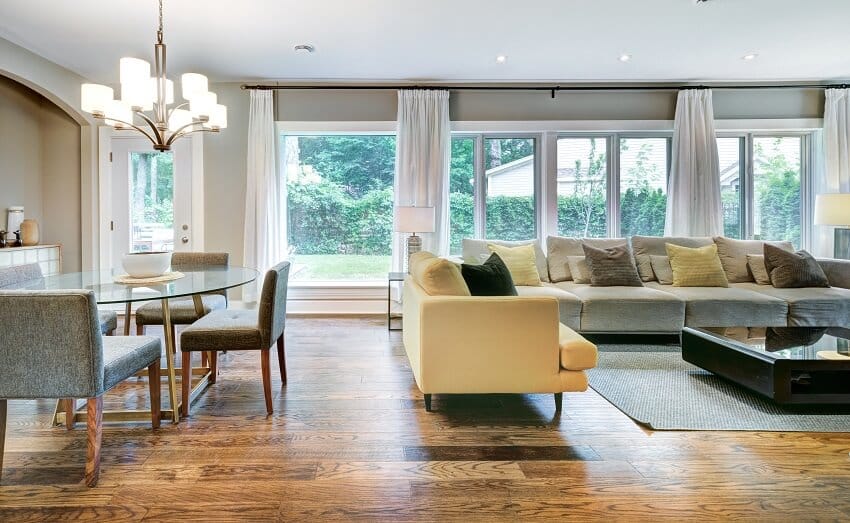
So it all boils down to this: which is better or best? Here’s the rundown so far.
Synthetic veneer floors are the way to go if you’re after the ease of installation and cheaper costs. They look nice and are usually peeled and stuck with little to no prep work needed on the bare floors. If you’re in a hurry to upgrade the look of your floors at home, it’s even something that you can opt to get done yourself or with nothing more than some adhesive and an adhesive brush while you’re at it.
On the other hand, if you’re after the comfort of the floors and how much carbon footprint you’re leaving on the environment while you’re at it, marmoleum floors may be far better options to consider at the end of the day. It is eco-friendly and has a certain appeal of quality, and it isn’t as flashy as vinyl.
It all depends on what you want to prioritize the most for your floors. Again, if it’s achieving the “look” without the hassle of high costs and difficult installation, it should be veneer floors through and through. If you’re all about simplicity, basic comfort, and being aware of the environment, then renewable floor material should be your best bet.


